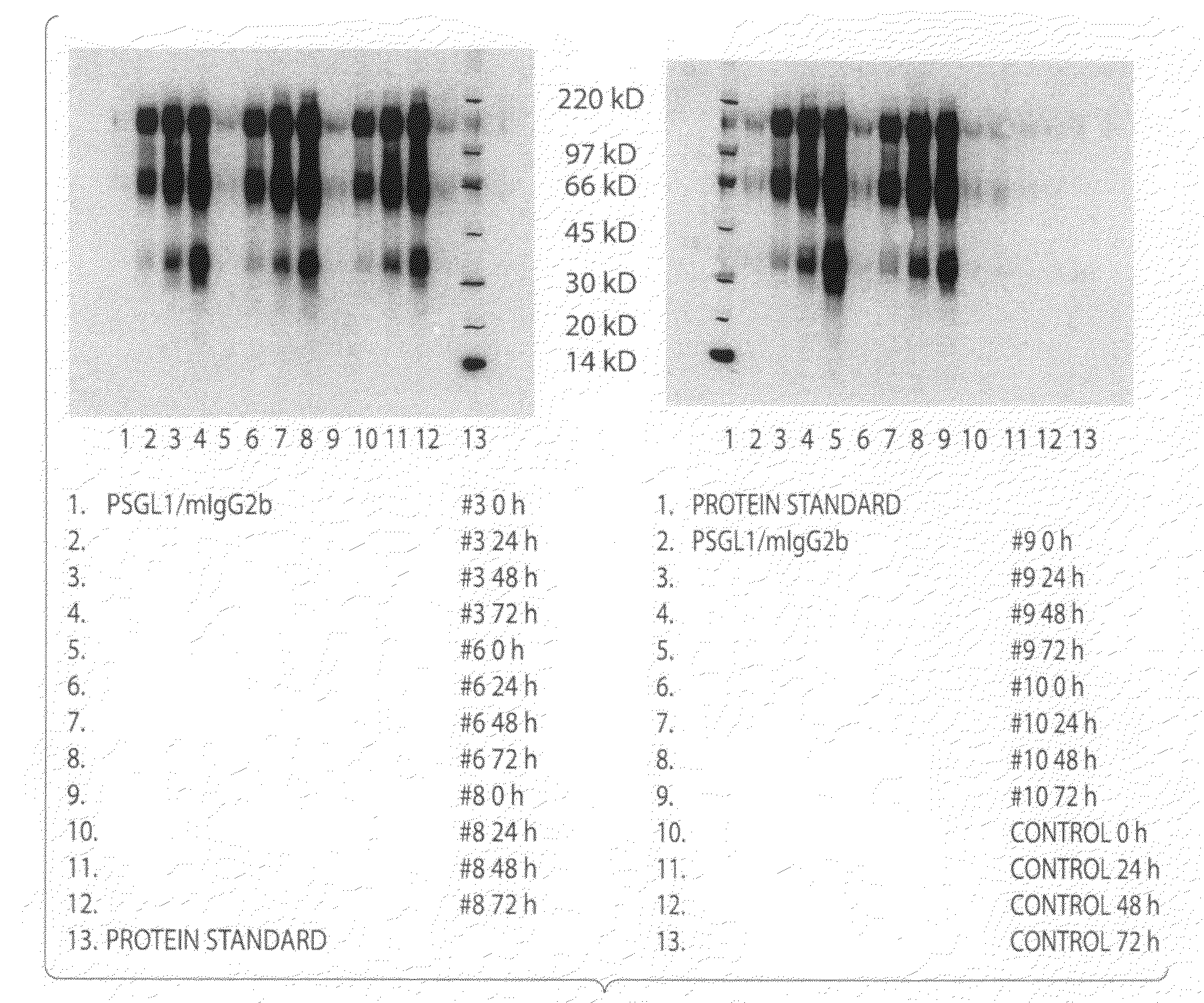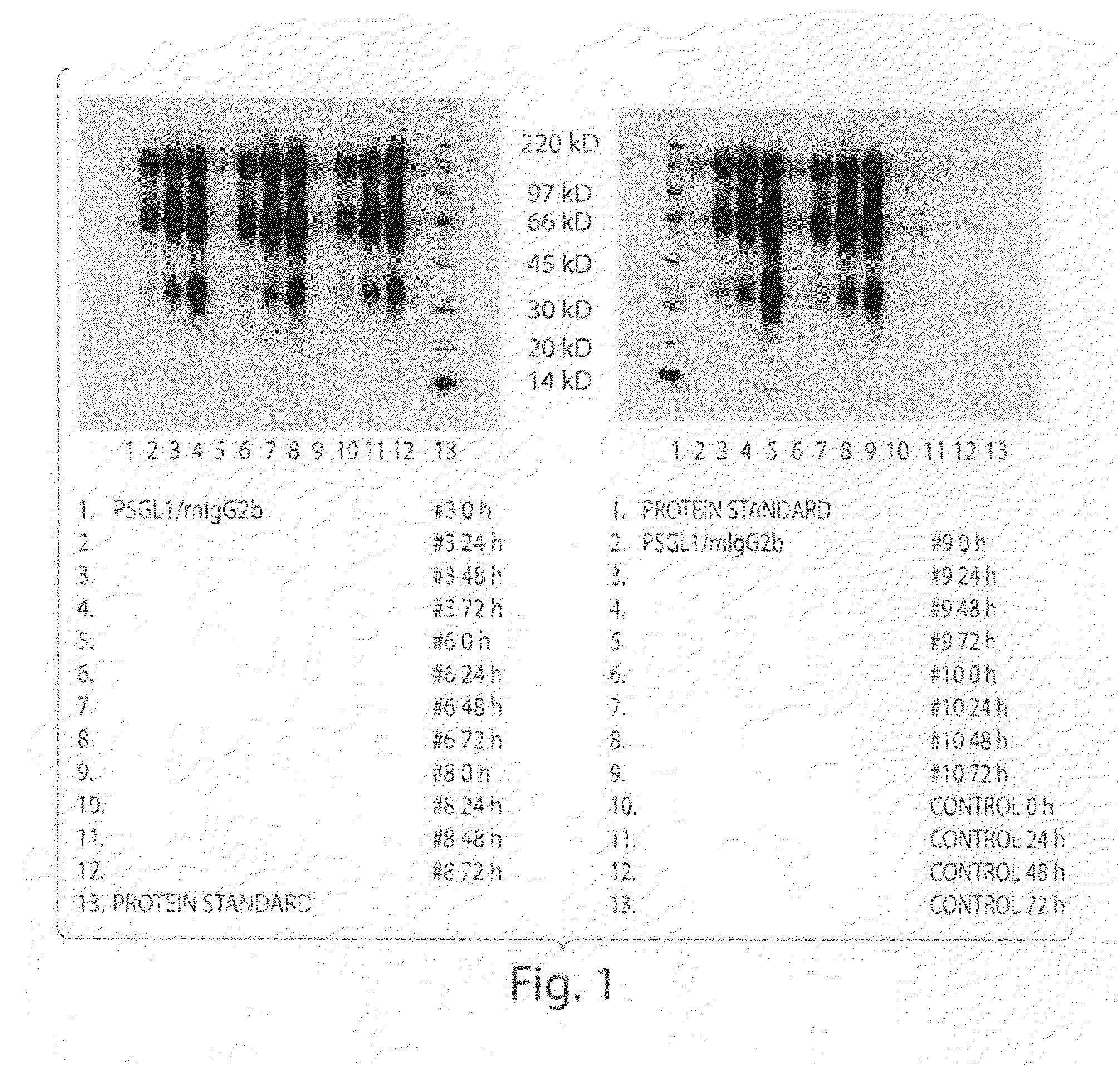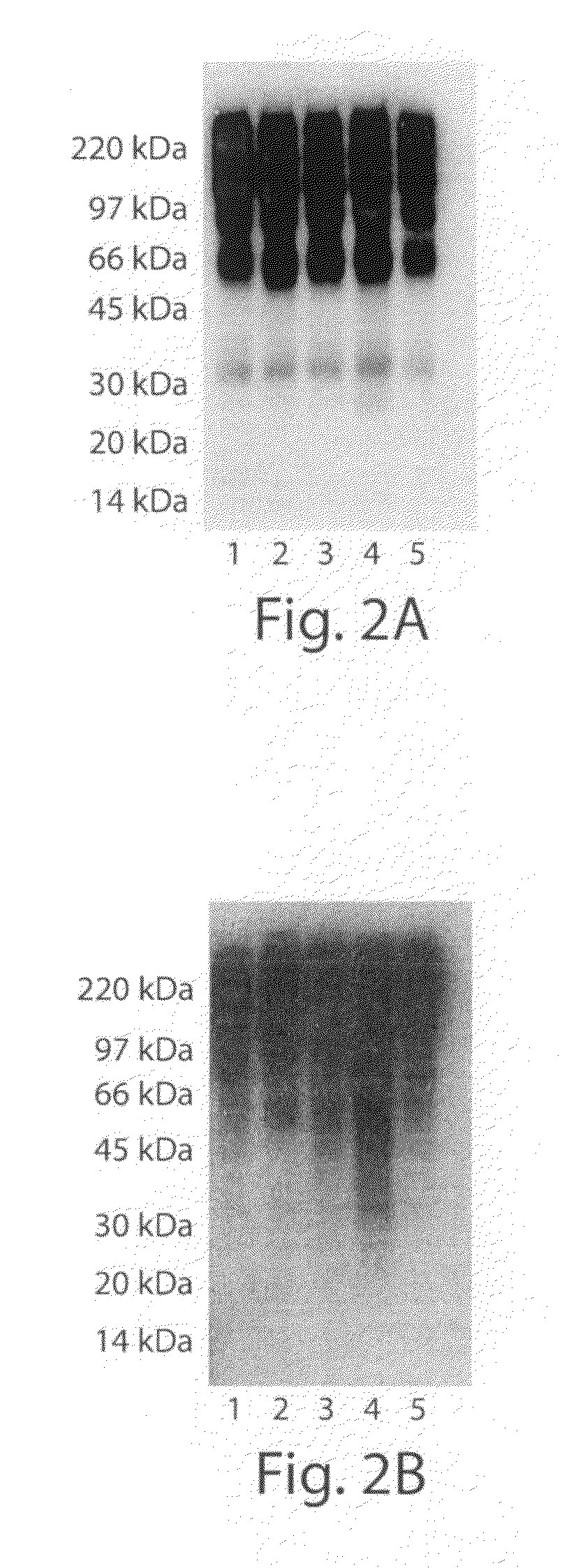Production of proteins carrying oligomannose or human-like glycans in yeast and methods of use thereof
a technology of oligomannose or human-like glycans and production methods, applied in the field of glycoprotein production and protein glycosylation engineering, can solve the problems of low productivity, risk of virus contamination, and heterogenous glycosylation product formation, and achieve the effect of modulating inflammation and high-interesting targets
- Summary
- Abstract
- Description
- Claims
- Application Information
AI Technical Summary
Benefits of technology
Problems solved by technology
Method used
Image
Examples
example 1
Expression of the Mucin-Type (PSGL-1 / MIGG2B) and αl1-Acid Glycoprotein (AGP / MIGG2B) Fusion Proteins in the Yeast Pichia Pastoris
[0148]PSGL-1 / mIgG2b carries mainly O-glycans whereas AGP / mIgG2b is exclusively N-glycosylated. The cDNA sequence for a fusion protein comprised of the extracellular part of the mucin-like protein, P-selectin glycoprotein ligand-1, or the whole coding sequence except the translational stop for α1-acid glycoprotein, and the Fc part of mouse IgG2b was subcloned into an expression vector for P. pastoris as follows.
Construction of Expression Plasmids
[0149]The cDNA encoding PSGL-1 / mIgG2b was PCR amplified from the PSGL-1 / mIgG2b expression plasmid [27] using 5′-CGC GGG AAT TCC AGC TGT GGG ACA CCT GGG-3′ and 5′-GCG GGA ATT CTC ATT TAC CCG GAG ACC GGG AGA TG-3′ as forward and reverse primers, respectively, and was ligated into the multiple cloning site of the pPICZα vector (Invitrogen, Carlsbad, Calif., USA) following EcoR1 digestion. The cDNA encoding AGP-1 / mIgG2b...
example 2
Assess the Ability of Pichia pastoris-Produced PSGL-1 / MIGG2B and AGP / MIGG2B To Bind Macrophage Mannose Receptor, DC-Sign and Mannan Binding Lectin
[0173]Immunoglobulin fusion proteins of PSGL-1 and AGP produced in wild type Pichia and purified, as described in Example 1, were used in experiments to assess their ability to bind to recombinant human macrophage mannose receptor (MMR), DC-SIGN / Fc chimera and mannan binding lectin (MBL) Using Biacore (real time surface plasmon resonance spectroscopy) analysis as follows.
Real Time Surface Plasmon Resonance Spectroscopy and Data Evaluation
[0174]Analyses were performed using a Biacore 2000 instrument (Biacore, GE Healthcare, Uppsala, Sweden). Recombinant human macrophage mannose receptor (MMR), DC-SIGN / Fc chimera and mannan binding lectin (MBL) were purchased from R & D Systems and immobilized on a CM5 sensor chip using amine coupling chemistry according to the manufacturer's instructions. Briefly, activation of the surface was made with EDC...
example 3
Humanize the Repertoire of O-Glycans Produced by the Yeast Pichia Pastoris
[0184]The next step will be to express PSGL-1 / mIgG2b with a humanized O-glycan repertoire. To this end, we will co-express one or several UDP-N-acetyl-D-galactosaminide:polypeptide N-acetylgalactosaminyltransferases (ppGalNAc-Ts), which are the enzymes that in a peptide sequence-specific manner adds N-acetylgalactosamine residues to the amino acids serine or threonine in the peptide chain. Initially we will express the native forms of the enzymes. If this results in incorrect ER / Golgi localization, we will express chimeric forms of the enzymes in which the catalytic domain of the ppGalNAc-T has been fused to the transmembrane domain of the yeast-specific mannosyltransferase that links the first mannose residue to the peptide chain. If this does not work, transmembrane signal sequences from other type II proteins in Pichia will be tried. In addition, we most likely need to silence the expression of various man...
PUM
| Property | Measurement | Unit |
|---|---|---|
| Temperature | aaaaa | aaaaa |
| Molar density | aaaaa | aaaaa |
| Molar density | aaaaa | aaaaa |
Abstract
Description
Claims
Application Information
 Login to View More
Login to View More - R&D
- Intellectual Property
- Life Sciences
- Materials
- Tech Scout
- Unparalleled Data Quality
- Higher Quality Content
- 60% Fewer Hallucinations
Browse by: Latest US Patents, China's latest patents, Technical Efficacy Thesaurus, Application Domain, Technology Topic, Popular Technical Reports.
© 2025 PatSnap. All rights reserved.Legal|Privacy policy|Modern Slavery Act Transparency Statement|Sitemap|About US| Contact US: help@patsnap.com



